Sony X95J Reviewed at $2,299.00 (75")
Product Name: Sony X95J
Product Description: 2021 4K LED LCD TV
-
Design - 9.3/10
9.3/10
-
Video Quality - 8.8/10
8.8/10
-
Ports & Connectivity - 9/10
9/10
-
OS, Apps and Features - 9.2/10
9.2/10
-
Price / Quality - 8.5/10
8.5/10
Summary
Reviewed at $2,299.00 (75″)
Pros
- Great SDR and HDR brightness
- Low input lag
- Comes with HDMI 2.1
- Many streaming features
Cons
- Not very good color reproduction
- Average motion performance
- VRR is still a promised feature
- Not so much different from the X90J
Cheapest Places to Buy :
*We are a reader-supported website. When you buy through links on our site, we may earn a small affiliate commission at no extra cost to you. Home Media Entertainment does not accept money for reviews.*
Obviously most of the attention when it comes to Sony TVs in 2021 has been focused towards their flagship OLED, the A90J, and not without reason as it was Sony’s first OLED TV to use the new improved panel with a heatsink in order to push the brightness more than traditional OLED panels can do. But Sony has a pretty stellar LED LCD lineup also and today in our Sony X95J review we will be taking a look at their top 4K LED LCD offering for this year.
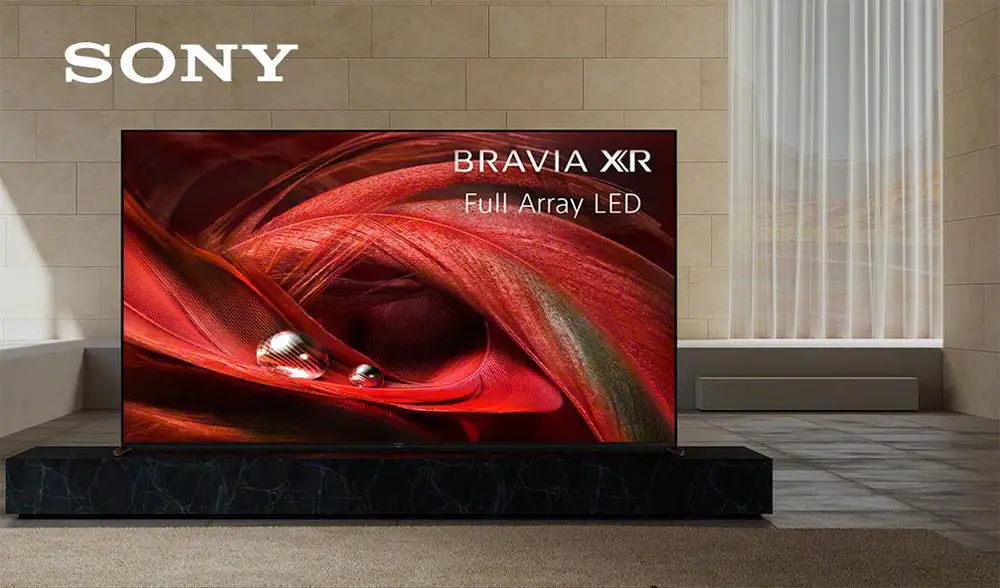
Now, if you look at the specs closely you will most probably see something strange here as the X95J and X90J, that we had reviewed recently, look awfully similar making it hard to distinguish which one is the best for your specific needs. In fact, other than the obvious omission of a 55″ size the X95J has exactly the same specs sheet as the X90J which is Sony’s fault as it adds confusion and doesn’t make it easier for consumers to understand what is different and what to choose from the two. But fear not as we are going to pinpoint their differences soon.
As for what the X95J brings to the table we find once again Sony’s best processor, the new Cognitive Processor XR. We also get a full array backlight system with local dimming while the TV uses a VA panel with a frequency of 100/120 Hz depending on the region. Other features include Dolby Vision support, Sony’s Acoustic Multi-Audio with Dolby Atmos and DTS support, HDMI 2.1 ports while, as with all TVs from Sony, in terms of OS we find the latest Google TV with Chromecast, Airplay and voice control support.
As with most high end Sony TVs the X95J also includes Netflix Calibrated mode, IMAX Enhanced and Calman Ready. As you see the X95J comes with everything included in the X90J. But the differences are in the details so without further delay let’s start our analysis.
Design
The X95J may be similar on paper to the X90J but when it comes to their looks they are completely different designs. The X95J looks a bit more premium due to the inclusion of a metal frame instead of a plastic one that was used in the X90J while its thickness is also smaller in the X95J measuring just 2.40″ (6.1 cm) which will make it look great if you plan on mounting it on a wall.
Turning the TV around we see that the X95J also uses a different design for its back panel. The X design is retained at the middle reminding us that this model belongs in the Bravia XR family of TVs while its square pattern is once again used making the plastic back a bit more interesting in the eye.
Now as far as its ports layout, unlike the X90J, the X95J does things different as we find two groups of ports on the right side of the back panel with one group looking sideways while the other downwards. As always the power connector is isolated from the rest on the left side.
The TV uses a bench type stand but this is a different design than the one in the X90J. The one we get here can be attached in three different positions (only in the 75″ and 85″) and thus allow you to choose the most optimal one for your furniture. This type of stand reminded us the one used in the A90J which features a similar design with various positions to choose from.

As for the remote, this is exactly the same one we saw in the X90J which is the new design remote that Sony has been using in many of their 2021 releases and looks good enough all things considered. It features a grey metal texture on top while compared to last year Sony has added a couple more dedicated buttons for a total of four this year.
So instead of only two dedicated buttons for Google Play and Netflix now we have four and these are used for Youtube, Netflix, Disney+ and Amazon Prime video. There is also a Google Assistant button that can be used with the built-in microphone in order to issue your voice commands but in order for that to work it needs to be paired to the TV through Bluetooth. If you pair it then all other commands work without the need for line of sight which is a nice small feature to have.
Everything else is exactly the same and all buttons have a nice feel to them with certain distance from each other to avoid pressing the wrong one. In general the remote is an upgrade compared to the one we saw in previous years and Sony seems to keep that well into 2021.
The X95J looks more premium than the X90J. With a more slim profile, metal frame and a better looking backside the extra cost is put in good use here.
Video Quality
Processor technology used
The X95J naturally uses Sony’s latest processor called Cognitive Processor XR which is one amazing piece of silicone and is responsible in part for the excellent image quality many of Sony’s TVs have this year.
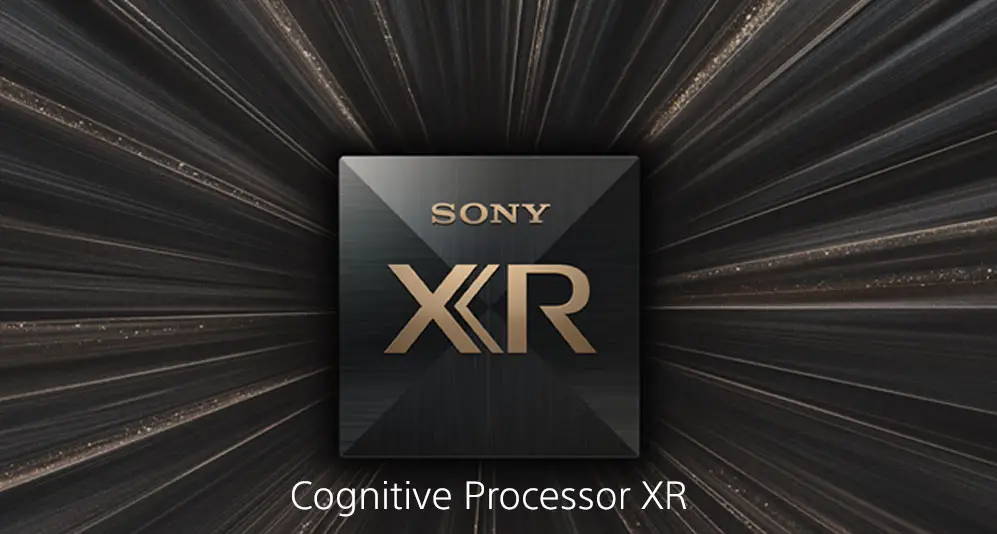
The new chip divides the screen into hundreds of zones and recognizes individual objects in these zones better than ever before. What’s more, it can cross-analyze around a few hundred thousand different elements that make up a picture in a second like focal points, contrast, colors, motion and clarity and determine ways in order to improve the end result even more.
The new processor is not only good at providing excellent picture quality but also deals with all sound elements. Being included in the XR Sound suite the processor supports XR Sound Position in order for the audio to match exactly what is displayed on screen while XR Surround is responsible in creating a virtual 3D environment in order to up the immersion even more. But we will talk more about the audio in our dedicated section as the X95J has been spiced up compared to its lower brother, the X90J.
Lighting technology used
The X95J gets the Full Array with Local Dimming (FALD) light system which means that there is an array of LED lights at the back of the display that is divided into different zones that are controlled by the TV’s software to light up whenever the content asks for it.
There are two crucial factors when it comes to how efficient a FALD system is. The first is how many zones are being used. The more the better but keep in mind that cost goes up also so most manufacturers seem to have tried to reduce this number and by improving their dimming algorithms, the second crucial factor, they try to achieve similar results. Some times these algorithms are efficient enough but not always which can result in various undesirable effects on the screen.

What is a bit disappointing is the fact that a few years ago the top flagships using FALD systems would come with hundreds of dimming zones which would allow for more accurate light control. We see lately that most brands have ridiculously reduced the number of zones even in their top premium releases and the X95J is a prime example of this.
The unit we had for testing was the 75″ size and from the looks of it, it uses just 84 dimming zones. For your information the 65″ comes with 60 dimming zones while the 85″ comes with 118. The number of zones is definitely low but this is the first key difference we find compared to the X90J as the equivalent size of that model comes with only 32 dimming zones, almost half of what we have here.
The good news is that even with this low number of zones the X95J’s local dimming felt capable enough. Zones transitioning was a bit noticeable but we didn’t feel it was so much bothering as in some other TVs utilizing similar low number of zones. Blooming was still obvious around very bright objects behind a very dark background but again this was mostly distracting in very specific scenes and was not so obvious in many bright scenes.
To be honest the FALD system in the X95J did better than expected. When we first found out how many zones the TV was coming with we were a little discouraged but a number is just a number and the X95J proved that to us.
Brightness / Contrast
Let’s take a look at our brightness measurements now. By using the Custom Picture mode and with maximum brightness and Peak Luminance the unit gave us 1,020 nits of brightness in our 10% white window SDR brightness test over a dark background. Excellent brightness here and how it should be from the flagship 4K LED LCD Sony has.
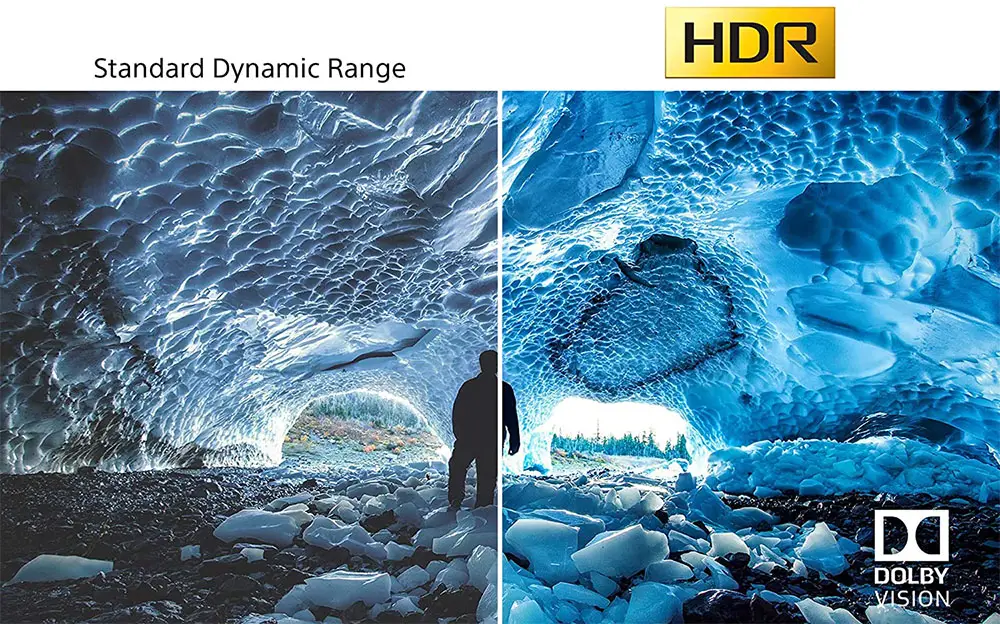
On our 10% HDR test now the X95J was able to output 967 nits of peak brightness. Again we used the Custom Picture mode with maximum brightness and Peak Luminance. This number may not be the highest we have seen in a 4K LED LCD TV but anything close to the 1,000 nits threshold is good enough by any standards.
Keep in mind that the TV can go a bit higher with these numbers by using the Vivid Picture mode in combination with a few other settings available but you are going to loose some picture accuracy so it’s a tradeoff really and depends on what you prefer the most. From these numbers it is clear that the X95J is obviously brighter than the X90J and this in part has to do with the more capable FALD system being utilized here.
As for contrast it seems that the X95J is not as good as the X90J. Although both TVs use VA panels it seems that due to the fact that the X95J uses an X-Wide Angle and X-Anti Reflection filter the resulting contrast is lower. Using the Local Dimming feature does help bring contrast closer to the X90J levels but it is still not on the same level.
One small note here, as it seems that the 65″ size does not use this X-Anti Reflection filter and as such it should, in theory, have better contrast. Unfortunately we didn’t have a 65″ size to test it for ourselves.
Viewing angles
Viewing angles is another area where the X95J seems to fare better than the X90J and this is due to the fact that the 75″ and 85″ sizes use Sony’s X-Wide Angle technology. Viewing angles were pretty good for a VA equipped TV and from what we could tell the X95J image quality was retained to pretty good levels up to around 35-40 degrees of angle.
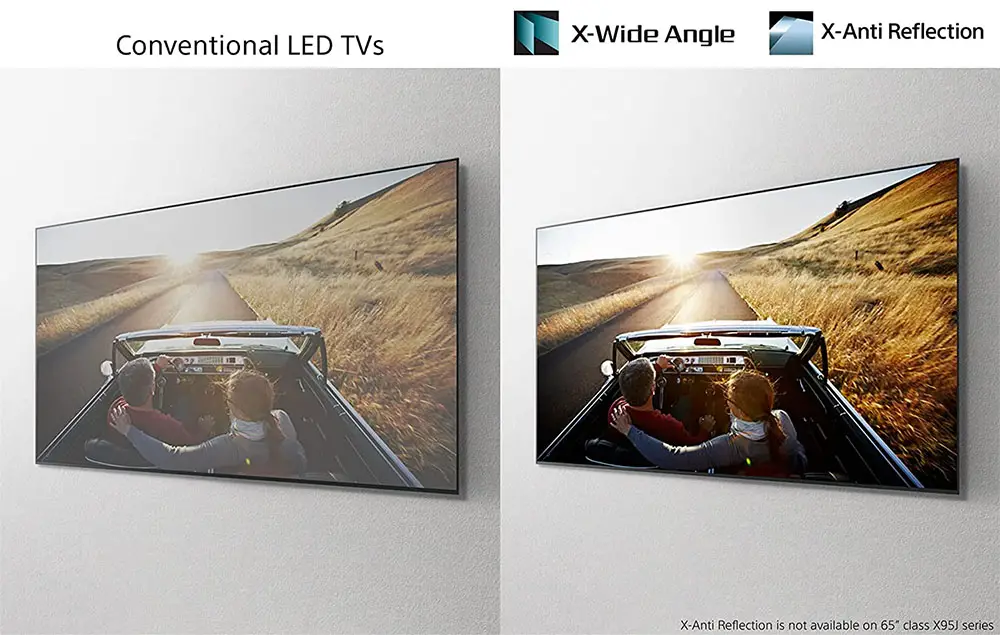
As a result if you plan on using this TV in a living room where multiple wide positions will be used by the family then the X95J will do a very fine job at this.
HDR support
As far as HDR protocols is concerned there are no surprises from Sony as we continue not to get HDR10+ from them and it seems that they are firmly into Dolby’s camp for now.
In total the X95J features the standard trio of HDR protocols that includes the basic HDR10 which is required for 4K UHD playback, HLG that is used in broadcasting and lastly the more advanced Dolby Vision that uses dynamic metadata and offers the best quality from the three available.
If you don’t care about HDR10+ then you shouldn’t really worry about it. Dolby Vision has far more support for the time being but as we have seen an increasing number of titles supporting Samsung’s solution this may become something to consider in the future.
Color coverage
As was with the X90J, the X95J is equipped with certain tech in order to allow it to display deeper and more lifelike colors. As such Sony has used a XR Triluminos Pro display in combination with XR Color technology which is included in their XR Picture suite.
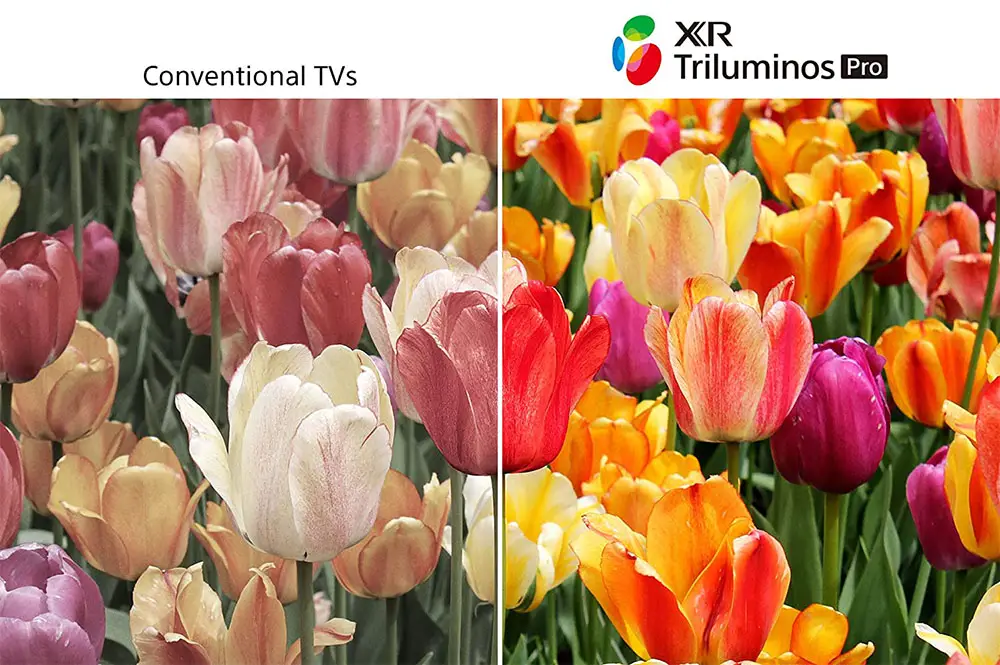
For this test we measured 88% coverage in the DCI-P3 color space which is ok. On the wider REC.2020 color space we got a 64% coverage which is average and to be honest, we are a bit disappointed by these numbers. As it is, there is not much difference between the X95J and the X90J we tested before.
These numbers may be good enough for a mid-tier release but when we are talking about Sony’s finest 4K LED LCD release in 2021 we were expecting more.
The X95J had very nice color gradients with very little banding mostly in the darker shades but most of the time this will go unnoticed.
Motion performance
Onto our motion performance tests and from what we have observed here the X95J was not all that different from the X90J. In fact the two TVs seemed to behave extremely similar here indicating that whatever processing done in these two models is very similar if not the same. The TV comes with a 100/120Hz panel (depending on your region) while due to the inclusion of Sony’s new processor we get XR Motion Clarity which is the latest technology used to smooth out motion.
You have the option to use either the standard motion interpolation system or use the Black Frame Insertion (BFI) interpolation that is adding black frames in between individual frames and can potentially smooth out motion. BFI can be enabled by turning Clearness to max if you use the Custom setting in the MotionFlow menu.
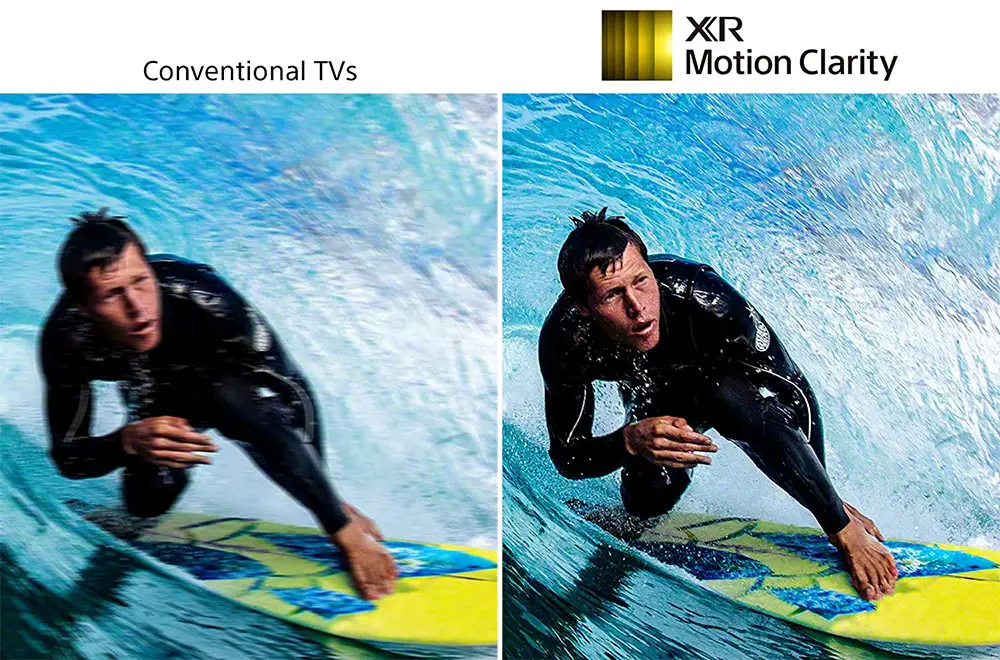
BFI, as usual, was able to improve overall motion but the TV showcased exactly the same image duplication issue we had seen in the X90J and X80J. But the problem was less obvious as we had seen in the X90J. Also keep in mind that in general BFI has also a negative effect on brightness due to the black frames that are inserted.
Lastly we need to mention that although Sony advertises the X95J to support VRR this will come with a future update and is not currently available. Sony has already started rolling out firmware updates that will bring VRR to some of their 2020 releases and from the announced schedule the X95J should also get VRR at some point in early 2022.
Closing this part of our review what we can say is that the X95J was not all that different from the X90J. Similar features and similar behavior overall indicated that what was happening behind the scenes is not all that different between the two models. The X95J’s motion performance was good but to be honest we were expecting a bit more from Sony’s flagship. And the missing VRR will really haunt Sony until they manage to add it to all the models they have promised it for.
Input lag
One area where we were expecting to get very similar numbers compared to the X90J is the input lag tests. The X90J did very good here so there was no reason to believe why the X95J wouldn’t do similarly. So with Game mode turned on the unit managed to give us 17.8 ms which is very good and almost similar to the X90J.
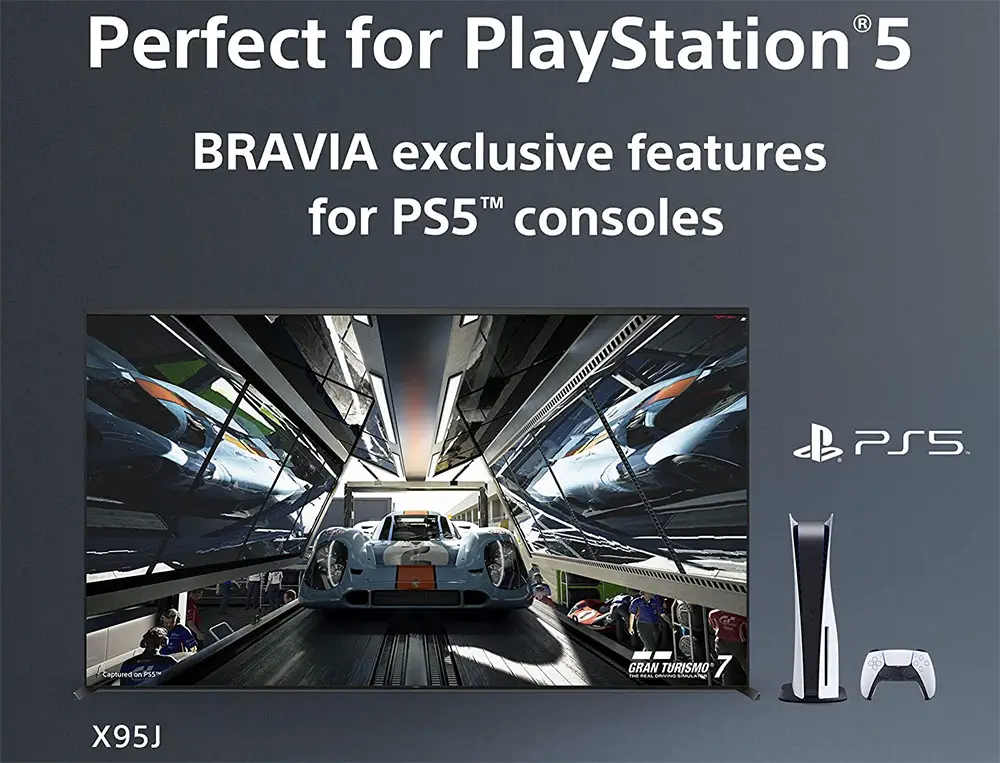
This measurement is an average of 1080p and 4K resolutions with different image properties. When we turned off the Game mode the input lag went up to 150.0 ms which may be too much for demanding gamers but can still provide a satisfying experience for casual gamers and slow paced games.
With the inclusion of HDMI 2.1 the unit comes with all the game centric features this offers including Auto Low Latency Mode (ALLM) which can really benefit the new game consoles that support it.
Before closing this part of our review we connected our PS5 for some F1 2021 action. As always we used the Quality mode setting in the game in order to get 4K@60Hz signal and the resulting performance was more than pleasing. We didn’t notice any delays or slow response times and all commands would render extremely fast on the screen making the X95J a perfectly capable TV for gaming.
Image quality impressions
The X95J may seem similar on paper but looking deeper into its capabilities it showcased a few key differences. First of all the X95J utilizes a more capable FALD backlight with more available dimming zones which results in more accurate light control along with much higher brightness than the X90J. The 75″ and 85″ also use X-Anti Reflection technology meaning that these sizes can handle bright room reflections better.

On the other hand the use of this extra filter has a negative impact on the contrast ratio although the Local Dimming feature did make things better. Motion performance was more or less the same and in general we cannot say that we were overall impressed by it. Sony has high standards with motion performance and we were expecting a bit more in this area. Also color reproduction was lower than expected especially if you consider this is the best 4K LED LCD TV Sony has this year.
The TV supports all gaming centric features like HFR and ALLM which is a plus but on the other hand VRR is a promised future feature and to be honest from early indications we have no idea how good Sony is going to implement this to their 2021 models.
Audio Quality
As for the sound Sony has used their own Acoustic Multi-Audio technology. Sound on conventional TVs with speakers located below the screen is often out of sync with the picture. Sony’s Acoustic Multi-Audio version used in the X95J includes two forward facing speakers, two sound positioning tweeters, and a built-in subwoofer. Independent amps are controlled separately to precisely manage sound positioning of these speakers in high tone areas, enhancing sound pressure and stability for more realism.
As a result the sound system of the X95J comes with a 2.1 channels configuration instead of the 2.0 channels used in the X90J. The system is rated at 10W + 10W + 10W + 10W + 10W for each speaker for a total of 50 watts of power output.

The TV obviously comes with Dolby Atmos support along with Dolby Audio and DTS. Keep in mind that Sony is one of the few companies that still support DTS and can even pass-through DTS:X signals from its eARC port so if this is important to you then the Sony is a no brainer. But Sony went one step further and included 3D Surround Upscaling in order to simulate a more surround active environment.
Now we have seen many TVs support Dolby Atmos but with their simple audio systems they fail to reproduce it the way it was meant to. The X95J may be slightly better than the one we heard in the X90J but fundamentally there are no major differences here to be found. Once again the system can provide distinct and loud volume that is adequate for casual viewing but it can in no way create an immersive environment for movies.
If you really want to feel how Atmos or surround activity sounds like you will at the very least need to get a soundbar with either Atmos or surround speakers support.
Before closing this part we should mention that the X95J also features Sony’s Acoustic Auto calibration in order to get the best audio performance no matter your sitting position.
Ports and Connectivity
Although many of Sony’s LED LCD TVs use a similar, single group port layout for some reason the X95J changes that and instead goes for two groups with one looking sideways that includes a Remote IR input, a AV input that needs a special adapter, a headphones jack, two USB ports and a single HDMI along with a small switch at the bottom for turning on and off the built-in microphone.
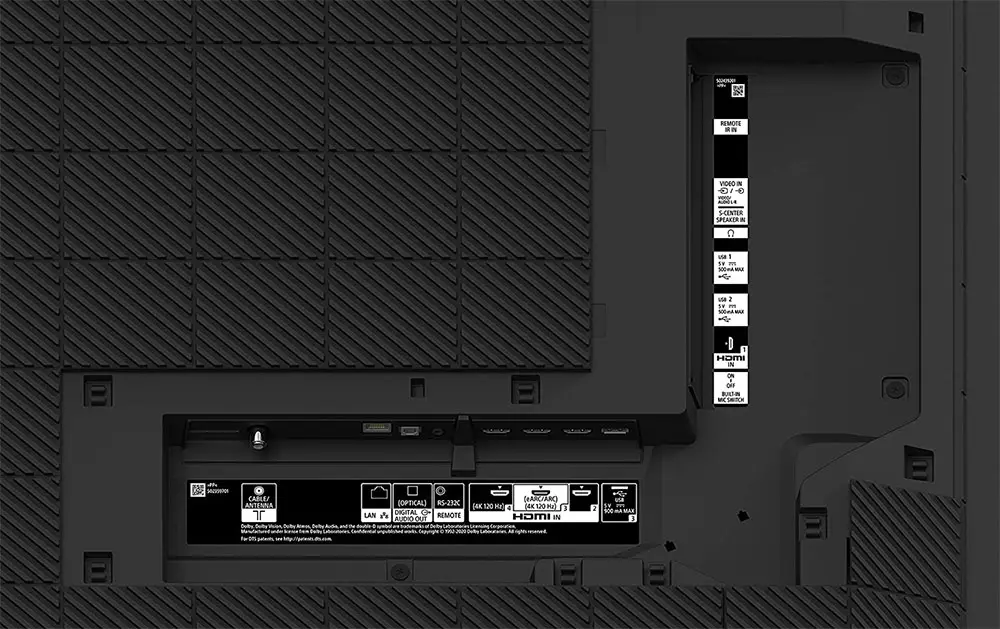
On the other group looking downwards we get the antenna/cable port, an Ethernet port for connecting to a local network, a digital optical output, an RS-232 jack, three more HDMI ports and another USB.
Sony, unlike some of the other big manufacturers, actually provide a USB 3.0 port in most of their TVs, even the most low cost ones. Usually manufacturers don’t seem very fond of using the newer USB ports and rely mostly on the archaic 2.0 version even for many of their top premium models so this is definitely a plus and good for Sony that decided to do the obvious.
Also another thing to mention is that we get two HDMI 2.1 ports along with two more older HDMI 2.0 ones. Although some other manufacturers like LG offer more HDMI 2.1 ports at least two are better than one. The problem here is that one of them is also the one with ARC/eARC functionality so if you plan on using that then you are left with a single HDMI 2.1 port. In general all TVs that feature only two ports use Mediatek’s SoC but at least the HDMI 2.1 ports in the X95J provide full 48Gbps bandwidth, even if this is not so much useful with the current TVs.
Also keep in mind that while the new HDMI 2.1 ports bring with them all the new features like ALLM, VRR and HFR, VRR is not supported so far and it will arrive at some point in early 2022.
In terms of wireless capabilities things are pretty much the same across the board so the X95J comes with built-in WiFi (802.11ac) along with Bluetooth v4.2. No Bluetooth 5 this year it seems.
Nothing different to report here really. The X95J may come with a different port layout but what it is there is exactly the same as what was offered in the X90J.
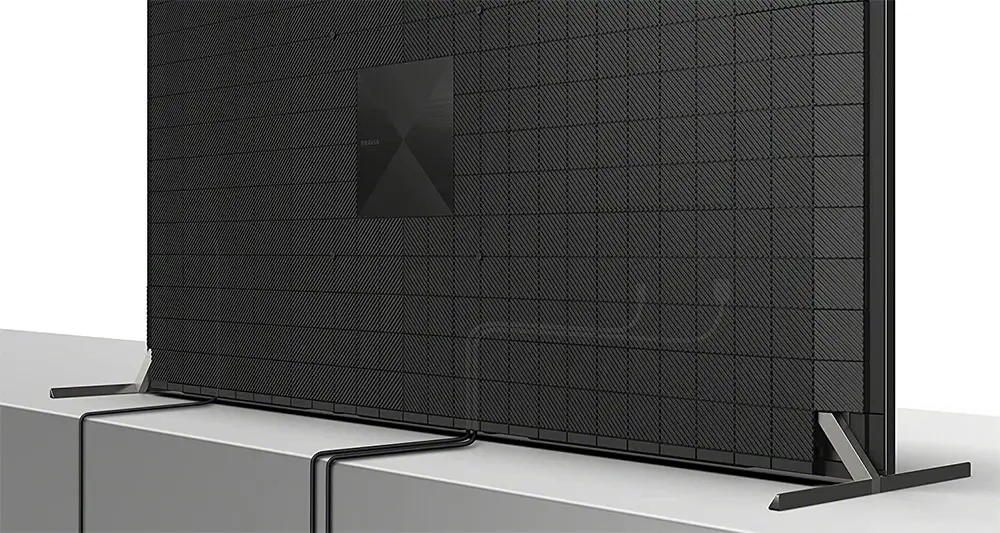
OS, Apps and Features
In 2021 Sony decided to take things one step further as far as the smart TV platform they use is concerned. All their TVs now come with Google TV instead of Android TV that was used up until last year. As a result what we observed in the X95J is not all that different from what we wrote in our X90J review so this part of our article is going to be very similar and we will make any changes necessary wherever we deem necessary.
Now many of you may be puzzled what the difference between Android TV and Google TV is. Well, it’s not so much difficult to understand what has changed really. Google TV is still Android TV but with an extra layer on top of it. Think of it like it is in Android smartphones. Most manufacturers that use Android in their releases they use on top of that their own layer that gives this extra something to their UI that make them unique both in appearance and functionality.
The same is with Google TV. You still basically use Android TV but there is the extra Google TV layer on top in order to make the UI feel different both in looks and functionality. The 2021 TVs from Sony that use Google TV have at their core the latest Android TV 10.0 but the home screen has been completely changed due to the new Google TV layer.
Everything now seems to have been designed around recommendations either it be movies, TV shows or applications and this seems to be the main focus of the new Google TV in general. During setup the wizard asks you of what specific streaming services you use in order to customize the Home screen recommendations.
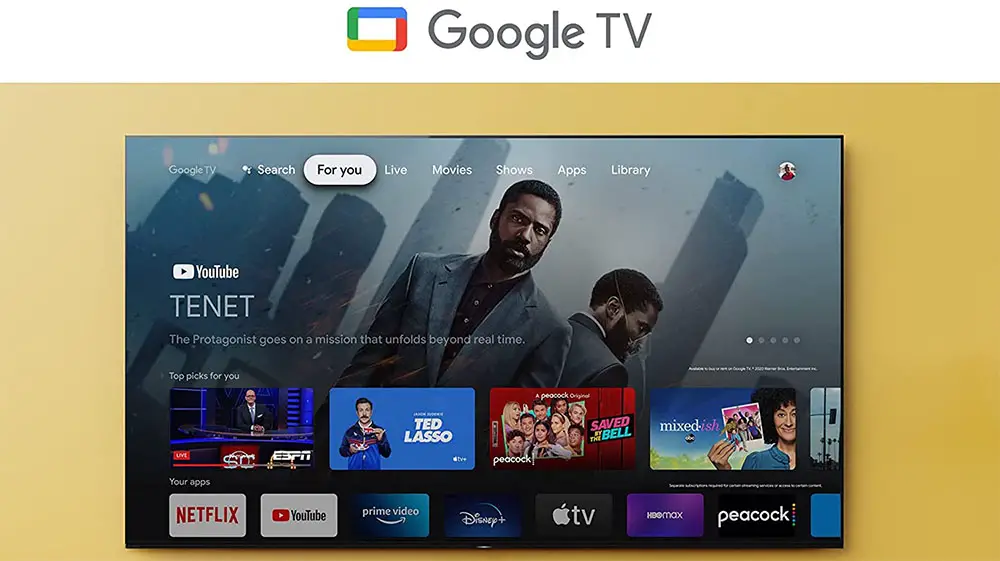
Keep in mind that Google TV is still Android at its core even though it looks different. But with Google TV things seem more fluent, more direct and more easy to navigate around. Now we already had a first hand experience with Google TV during testing some of the other Sony 2021 TVs like the X80J and X90J so we had a pretty good idea of what to expect.
If there is one thing that Android has in abundance that is huge app support. Through the included Google Play Store you can find literally thousands of apps that you can download and use except from the pre-installed ones. There is so much content available that you will definitely find the ones you are looking for and the list goes on and on.
All the big names are obviously present like Google TV, Disney+, Netflix, Amazon Video, Hulu and Youtube as well as Pandora, Tidal, Google Play Music, Spotify or iHeartRadio. As always some of them are region dependent so make sure the ones you are interested in are working in your area. Lastly certain apps like Netflix and Youtube, among others, support playback for both 4K and HDR content for those interested in it.
Here we need to mention that the X95J also comes with Netflix Calibrated Mode and what this does is to allow you to experience picture quality close to a filmmaker’s vision and intent for all content that is streamed through the Netflix streaming service.
The TV also comes with a new 2021 feature called Bravia Core and this is Sony’s online streaming service that promises high quality streams up to 80 Mbps and additional IMAX Enhanced content. One thing to keep in mind here is that the service comes with a feature called Pure Stream. With it you have two streaming options depending on your internet connection. The lowest of the two offer a 30Mbps quality stream which needs a 43Mbps connection and Bravia Core’s best stream reaching 80Mbps which requires a minimum of 115Mbps connection for it to be unlocked.
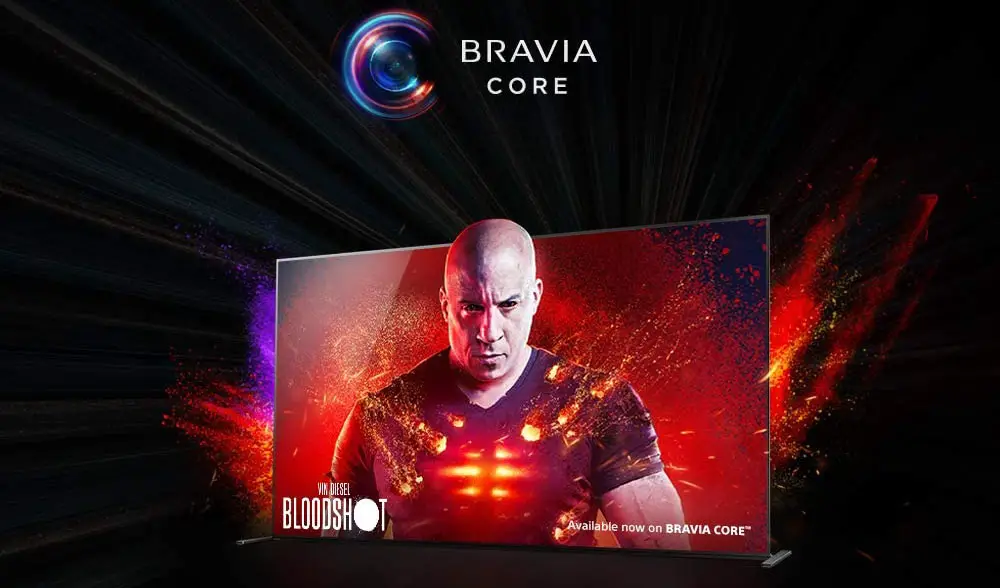
Chromecast is also available here and it gives you the ability to stream content from other Chromecast enabled devices like mobile phones and tablets directly to the TV. Voice control is also present but it seems that it is a bit limited compared to other competing models. By that we mean that although you can use the remote’s built-in microphone to give commands to Google Assistant for Amazon Alexa you will need an external Alexa enabled device to work. Additionally there is also Sony’s Voice Search available.
We have seen the same thing in many other Sony TVs and probably this has to do with the fact that it’s using Google’s Android system and thus having Alexa built-in was not possible. With voice control you can issue various commands to the TV but functionality extends far beyond that as you can control any smart devices you have in your house also.
There is also a built-in media player available that you can use to playback various video and audio content from an external storage connected to the USB ports. Sony’s built-in player was always a good performer and compared to the competition we can admit that it will be able to play more files in comparison but in general don’t expect it to replace your dedicated media player box if you use one. If there is a file that is not following the usual standards it will not play it something that a dedicated player might will.
The X95J behaved in a very similar manner to the X90J here. Most files played without any trouble. These were files with very common containers and codecs. Some very high bandwidth files had trouble but this was to be expected while some not so usual files failed to playback altogether.
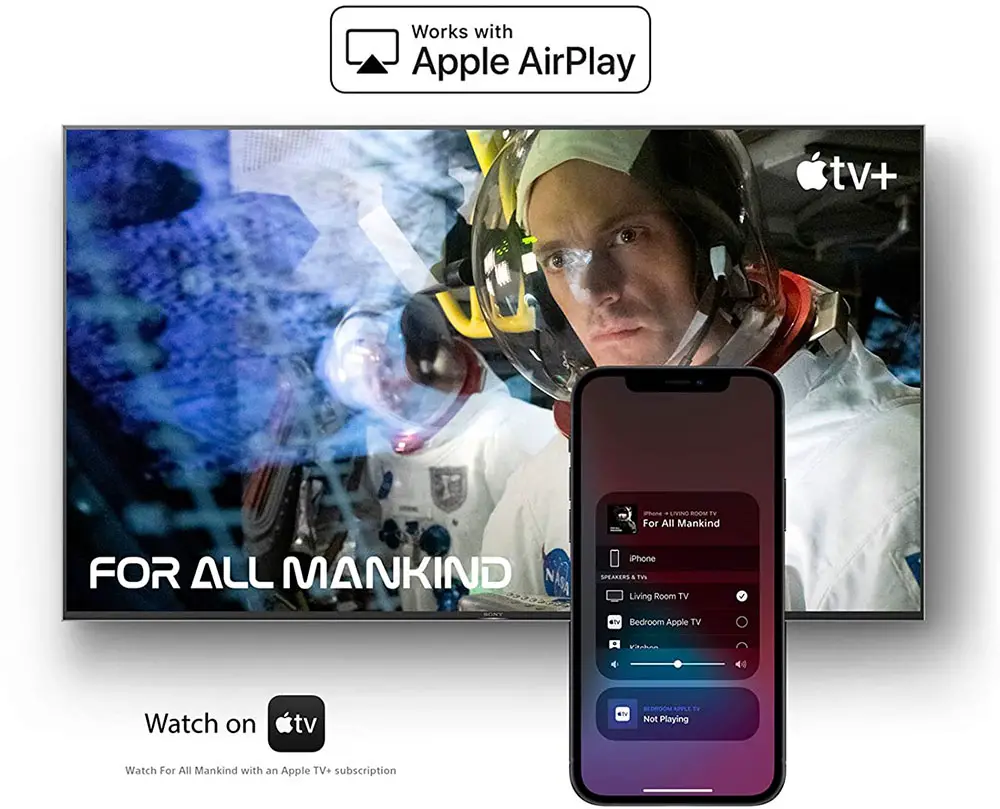
Sony has also added support for both Apple Airplay 2 and HomeKit. With Airplay 2 you can stream content from other Apple devices on your TV while HomeKit lets you control certain aspects of the TV through your mobile device. Also if you are all Apple then keep in mind that the X95J supports Apple TV which is Apple’s online streaming service in order to have the complete Apple’s suite. So in case you favor Apple’s products the X95J will certainly cover you in this respect.
This year all Sony TVs are Calman Ready. To address color variations from the production process, the TV is ready to use Portrait Displays’ high-performance Calman auto-calibration software. This allows an unprecedented level of calibration and the ability to fine-tune adjustments simply not possible through conventional picture settings. It delivers high-fidelity color reproduction that’s true to the original TV signal, and can even adapt to the subtlest changes in color that may occur over time.
As we already mentioned above the X95J comes with IMAX Enhanced certification. This means it can playback IMAX Enhanced content although this is still very scarce to find and most of it can be found in Sony’s own Bravia Core streaming service.
One last thing we need to mention is that there is no official app support for controlling the TV. If you want to control the X95J using your mobile device you can use the Android TV app made by Google that supports many of Sony’s TVs the last few years. It’s nothing major but can be a nice alternative to the included remote if you want to have more options.
The new Google TV feels like a new coat of paint over the Android TV platform we were familiar with the last few years. In essence this is still Android but Google made sure to make this feel different by making it a more personalized experience. And with all its features it doesn’t have much to miss compared to Tizen or webOS.

Final Thoughts
The X95J finds itself in a difficult position and surprisingly this comes more from within. With so similar specs it was inevitable that people would compare this one to the next in line, the X90J. There are some differences but honestly Sony made a very poor job distinguishing the two making it more difficult for the more expensive X95J to find its audience.
But to keep things simple what the X95J has more compared to the X90J is a better FALD backlight utilizing more dimming zones and resulting in more brightness, it comes with the X-Wide Angle filter allowing for better viewing angles and better reflections handling and uses a more advanced audio system. On the other hand due to the use of this extra filter the X95J has worse contrast ratio in comparison.
Overall the X95J had good up-scaling capabilities, a very good local dimming function, great brightness in both SDR and HDR, nice color gradients, good viewing angles and low input lag. We were a bit disappointed with its color reproduction, motion performance was ok but not as good as you would expect from Sony while VRR is still missing in action, although we do wait for it sometime in early 2022.
In the end, in order to determine if the Sony X95J is for you, you need to decide what you want more. If money is not a problem and you want the best 4K LED LCD TV Sony has on offer, then the X95J is the one to look for, no questions asked. But if you try to balance cost and performance then maybe the X90J is a more suitable choice. The X95J is a very capable TV and for those looking for a great 4K LED TV then this one can certainly fit the bill.
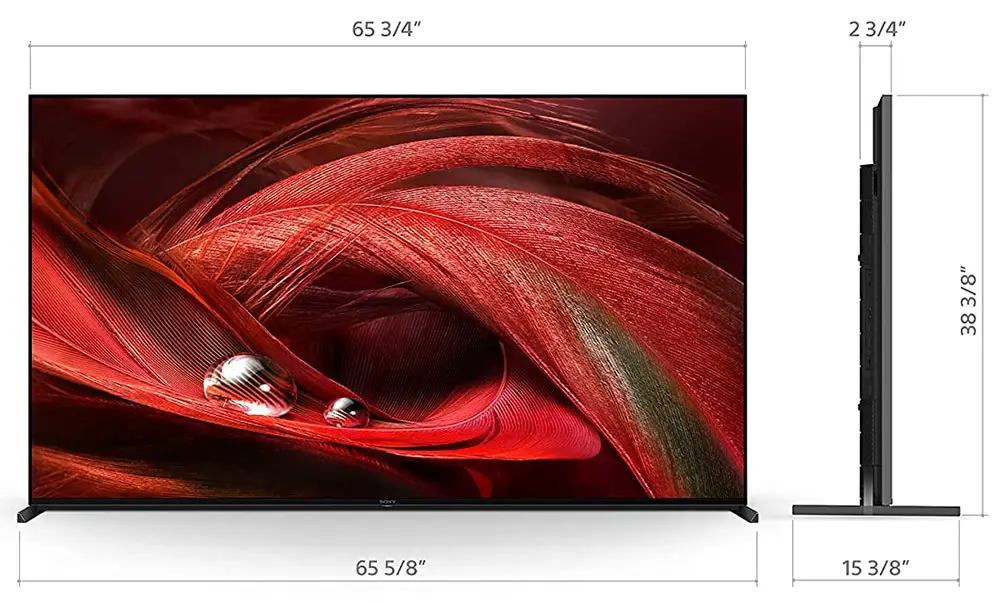
For more reviews you can check our dedicated 4K LED LCD TV reviews list or even look at our Product Reviews Table where you can find the brand and specific product you are looking for.
Cheapest Places to Buy :
*We are a reader-supported website. When you buy through links on our site, we may earn a small affiliate commission at no extra cost to you. Home Media Entertainment does not accept money for reviews.*
I was expecting more of the X95J. I was looking at some of the available LED LCDs and the Sony was one of them. I don’t consider an OLED, a bit afraid of all these burn-in issues. I think I will have a look at Samsung or LG. Any recommendations on these two?
Hello Aly. You will have to be a bit more specific on what you are looking for. Budget, size, required features, type of use…anything that could help me give you a bit more specific recommendations.
WOW what an awesome review on the Sony X95J and I have come across this at exactly the right time.
I was in our local TV store yesterday as I am looking at replacing our 75″ Samsung and was looking at the Sony. The sales guy almost had me buying yesterday and I am still strongly considering it, so reading this review has given me some more valuable info.
You mentioned that the color reproduction wasn’t that good, however I thought it was good, but then again I am comparing it to my 7 year old Samsung.
Thanks again for a very helpful review at a perfect time.
Hello Mark. As I have said many times a number is just a number and we provide it just for comparison’s shake. Because the X95J measured very low in our color reproduction test it doesn’t mean that it will not look good to many. In fact I am sure that many people would not even understand the difference with a much better performing model in this area unless you would put both TVs side by side. I am glad you liked the TV and surely has a lot of value in the right price.